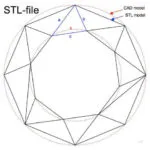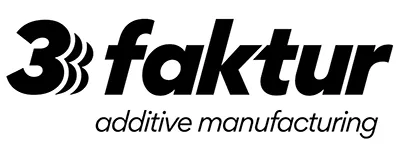
If you are serious about 3D printing and its possibilities, you are inevitably already familiar with the file format .STL (Standard Tessellation Language or originally STereoLithography). STL files serve as an interface between your 3D model (CAD model) and the many 3D printers that are now available. STL is the common language in the 3D printing industry. With the following article, we would like to introduce you to the STL file format in more detail.
History of the STL file format
The STL interface was developed by 3D-Systems in the late 1980s. The file format was then created for the first generative manufacturing process (stereolithography) to prepare CAD data for the 3D printer. It has since established itself as the quasi standard file format for 3D printing and has become indispensable in other 3D printing processes.
Opening STL files
Before we come to the “theory part,” here is a practical note about which programs you can use to open STL files. There are many different programs, but not every operating system supports every program and not all are available for free.
Free Software:
- Meshlab (Win, Mac, Linux)
- GLC_Player (Win, Mac, Linux)
- Blender (Win, Mac, Linux)
- Goolge SketchUP (Win, Mac)
- Meshmixer (Win, Mac, Linux)
- Microsoft 3D Builder (Win)
Commercial Software:
- IMSI/Design TurboCAD (Win, Linux)
- Autodesk AutoCAD (Win)
How STL 3D models are built up
Simply put, the STL file format converts your 3D model into a multitude of tiny triangles. Most CAD programs allow you to change your 3D model into an STL file. This is usually done via an “export” function. However, STL only transfers the basic information of the form, the model, i.e. no textures, for example. These must be “applied” separately if you want to have a full-color object.

Quelle: Laurens van Lieshout / Wikipedia
Then why is it used by hobby makers, professionals, engineers and 3D printing services? The format is so popular because it is so simple. Due to the radical reduction of data volume, STL files are small and can usually be sent by email without problems. They do not pose any problems during upload and download either. In addition, most software programs, 3D printers and other machines can handle this type of file without difficulty.
STL increases your data security
The following advantage of the STL file format is not immediately apparent. By submitting your 3D model to your 3D service provider, you may provide relevant information from your development work. By reducing the data to the positioning of triangles, much sensitive development data is not transferred. Especially in the field of rapid prototyping, this is a notable advantage of using STL files.
Alternatives to the STL data format
The STL file format is a worldwide standard because most CAD programs can work with it (Blender, SolidWorks, most Autodesk solutions). 3D printers also get along well with the format; it is almost a “universal language” in 3D printing. Besides STL, there are other file formats (the most important ones are: .3DM; .3DS; .SKP; .STEP; there are other formats).
Furthermore, the 3MF consortium, which consists of companies from the software and hardware industry, is working on a new data format. The 3D Manufacturing Format (3MF) should make it possible to transfer color, material and other information. Which is currently not possible with STL. Despite the participation of “giants” from the software sector and industry, the file format is to remain an “open source” project.
The weaknesses of the file format
While STL is considered the standard file format for additive manufacturing, complications may still occur with the STL files. On the one hand, not every 3D model available in this format is automatically 3D printable. Sometimes repairs are needed to the model to make it printable.
On the other hand, the STL format only transfers information about the outer surface and shape of the object. Data about the inner structure, colors and textures as well as other properties are not included. For full-color 3D printing, color information/textures must be saved in a separate file. Alternatively, color information must be manually assigned to the surfaces.
Furthermore, the simplification makes the conversion, for example, of an STP file into an STL, a one-way street – that is, an STP cannot be created out of an STL (or only with a great deal of effort), because the information required for this is lost during the export.
Conclusion
STL is currently the default file format for 3D printing. It is easy to use for “maker” and most, even industrial 3D printers. Due to the ongoing development of software applications and 3D printers, the demands on the technology are getting increasingly higher. The file format is slowly reaching its limits (e.g. missing color information). Therefore, the 3MF consortium has teamed up to develop a new “open source” file format that will replace the STL format (3MF) in the long-term. Despite the shortcomings mentioned above, the STL format is doing a good job and will continue to play an important role in 3D printing in the near future.

About 3Faktur: 3Faktur specializes in 3D printing, rapid prototyping, and rapid manufacturing. We utilize HP’s Multi Jet Fusion technology and offer various materials for prototyping and series production. If you have any questions about your project, feel free to contact us.
